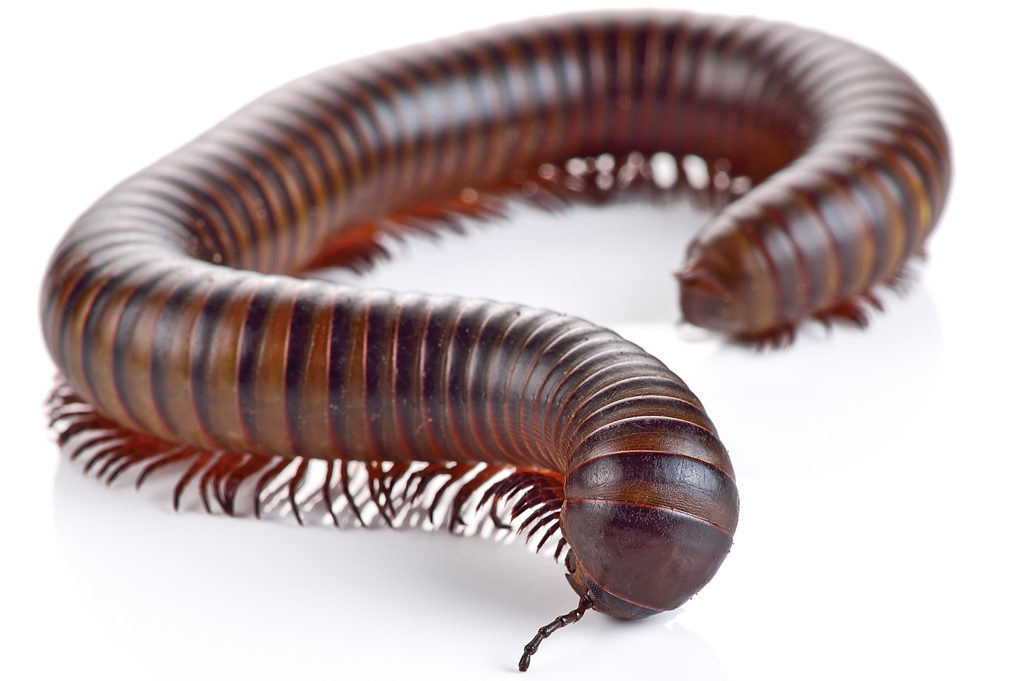
Millipedes: Quick Facts
• Sometimes called “thousand-leggers” because of their many pairs of legs
• Most species have between 30 and 90 pairs of legs
• The Illacme plenipes species can have more than 333 pairs of legs
• Known to migrate in large numbers during the Autumn
What does a Millipede look like?
• Primarily blackish or brownish, some red, orange, or with molted patterns
• Between 1/16” and 4-1/2” in length
• Antennae
• Long and cylindrical, worm-like
What do Millipedes eat?
• Millipedes are mostly scavengers, feeding on decaying plants, and occasionally dead insects
Where do Millipedes live?
• Typically found in areas of high moisture and decaying vegetation
• Areas such as under trash, piles of grass clippings, flower-bed mulches, or piles of leaves
• They typically do not live long indoors, unless the moisture level is high, and food is readily available
Are Millipedes dangerous?
• Some species give off a bad smelling fluid through openings along the side of the body
• This fluid can be toxic to small animals, including pets.
• This fluid can also cause skin blisters on humans
How can I prevent a Millipede infestation?
• Reduce areas of moisture in and around your home
• Consider running a dehumidifier if your basement is damp
• Keep the grass mowed to prevent it from retaining too much moisture. Water your lawn in the morning to allow the moisture to burn off during the day.
• Remove piles of leaves and grass clippings
• Store firewood on racks or shelving, not on the ground
How do I get rid of Millipedes?
• Vacuums can be an effective way to eliminate small quantities of Millipedes. Be sure to discard the vacuum bag as the odor may permeate the area.
• If you suspect an infestation, it is recommended that you contact a licensed pest control specialist. Please call DKS Pest Control at (724) 478-5344.
